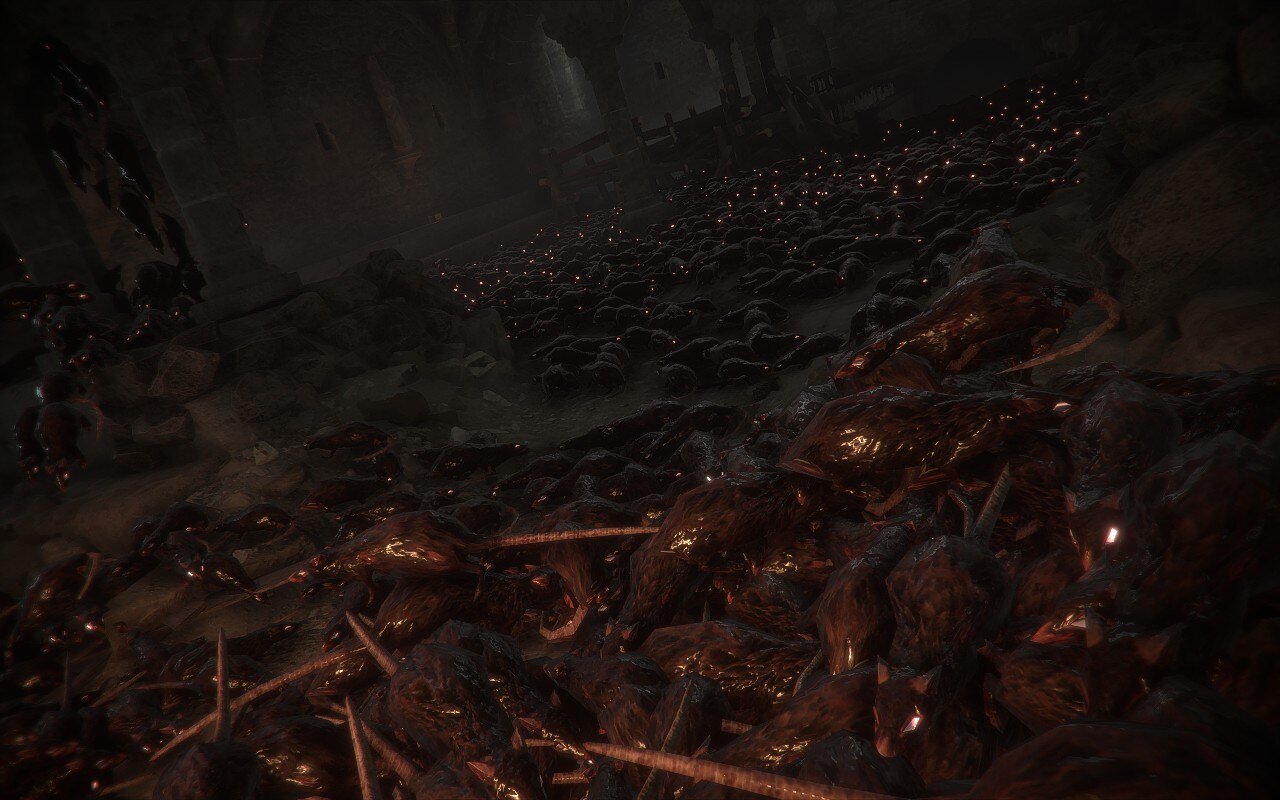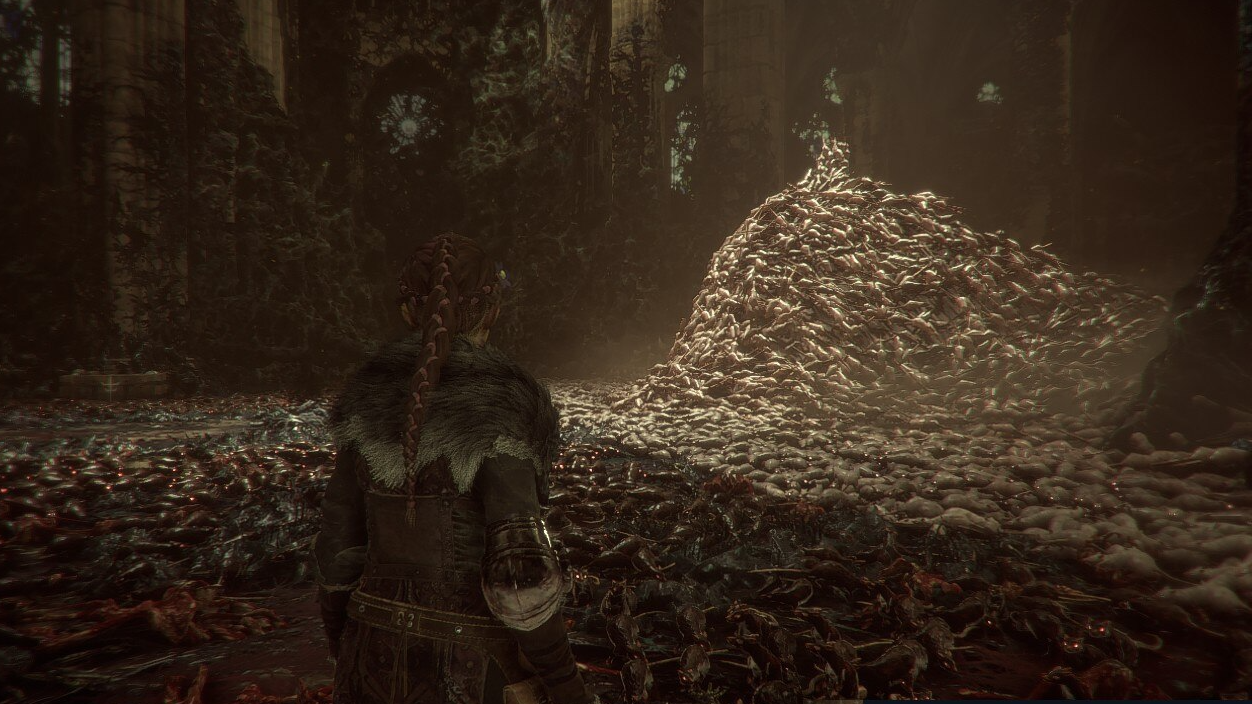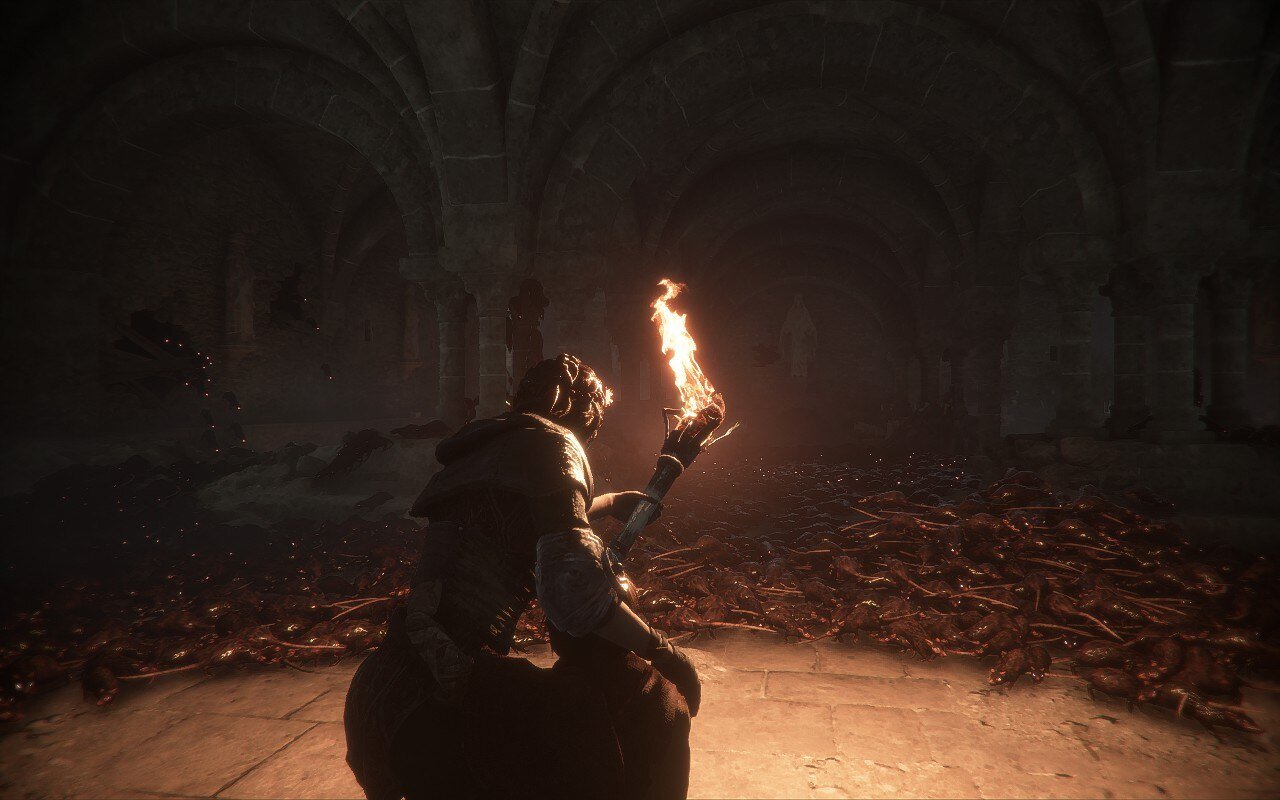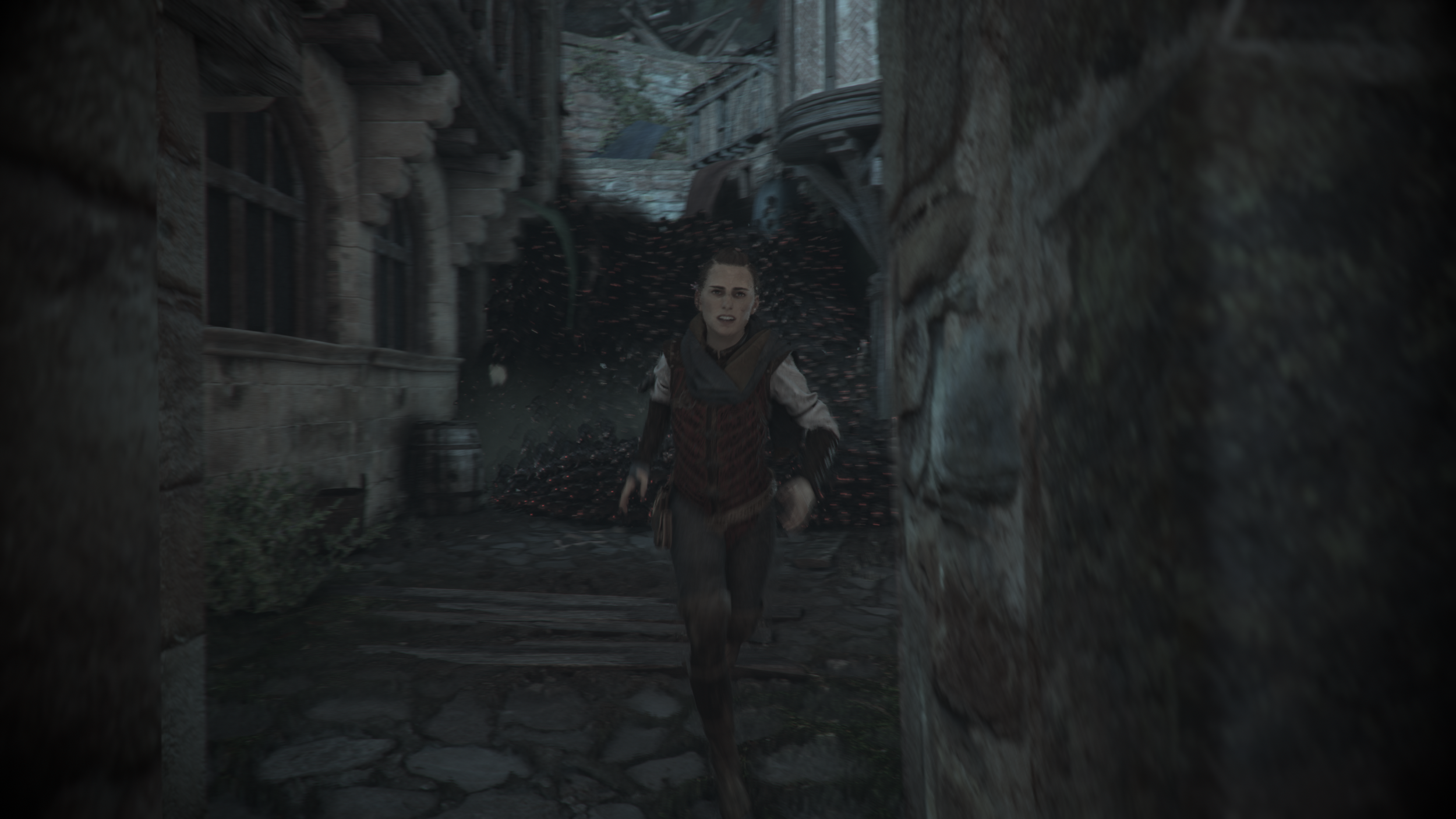Rats Like Stars in the Sky: The Horror of A Plague Tale
Every year around scary season, GwG offers a menagerie of thoughts on some of our favorite video game monsters.
Christian Haines, Managing Editor
The rats climb up walls. They form a swarming blanket of tails and fur, then they ascend like a thick liquid defying gravity. It’s disgusting, horrifying, especially when you’re pinned to a corner of the room, no place to run, these numerous tiny beasts inching in your direction. I’m talking about A Plague Tale: Requiem (2022), the most recent fourteenth-century European stealth adventure from Asobo Studio. It’s a beautiful game, filled with sun-drenched Mediterranean landscapes, colorful wildflowers, and glistening oceans. Well, it’s beautiful until you’re dropped into a pit of offal. Waste. Remnants. Decomposing flesh. Carrion. Rat food. In Requiem and its predecessor, Innocence (2019), there are moments when you’re required to wade through offal to make it to the next section of the story. Call them abjection hurdles, tests to see if you can stomach slithering through plague-ridden entrails.
It's easy to see why the Plague Tale games are disgusting. They’re studies in abjection. The crucial visual trope in each game is the rending of a veil: the landscape is a façade, a pixel curtain lurking beneath which are roiling rats and decaying flesh. The game introduces tension by making Amicia and Hugo, the protagonist siblings, enter through the tear in the veil into the underside of the pastoral medieval scenery. As they push through the muck, they make retching sounds, they complain, they let you know you’re lucky to be on the other side of the screen.
But what makes these games horrifying? What makes them monstrous? It’s the rats, of course, the rats in numbers. The horror in the Plague Tale series is mathematical as much as it’s aesthetic or narrative. It comes from accumulation, from the buckling of visual form and structure under the weight of squirming pixels. This isn’t just a smudging, like watercolors bleeding across a canvas. No, the rats annihilate figures on the screen, replacing them with an almost indecipherable roiling: the glowing eyes and writhing tails signify “rat,” letting you know you’re encountering earthly creatures, rather than cosmic horror, but as the streams of rats erupt from the ground, crawl across fields and muddy paths, swarm the screen, they become less a set of discrete individuals than a pulsing mass—a voracious digital-organic flood eating the scenery.
Rats in a Gothic church in A Plague Tale: Innocence.
The horror of Innocence and Requiem lies in the way the numbers exceed our senses. We hear the rats squealing, we see them oozing across surfaces, we comprehend their magnitude, but we can’t fix them in place perceptually. This is what the philosopher Immanuel Kant was getting at when he wrote about the mathematical sublime. The sublime is a concept meant to capture a specific kind of encounter between human beings and nature (or art). Kant describes a person looking over a mountain cliff in awe of how grand the Earth is. There’s a hint of horror – the mountain’s a crushing mass, the cliff a vertigo-inducing summit – but Kant mutes this horror by exalting the human capacity for reason: sure, humans are small in the grand scheme of things, but their ability to fold immensity in the architecture of their minds transcends the flesh.
But the mathematical sublime is a strange beast. It’s an encounter with uncountable greatness, an in-your-face glimpse of infinity. Kant’s example is the way the planet Earth becomes small when compared to the solar system, the solar system tiny when compared to the galaxy, the galaxy a speck in “the immense multitude of such Milky Way systems.” I like to envision Kant trembling as he writes these words, his faith in reason shaken by the dark depths of space. Kant in Space is the fifth film in the “Alien” franchise that fate left on the cutting room floor, alas. But Kant ties things up in a bow, explaining that as boundless as these stellar matters are, the human imagination is yet more boundless.
But rats swarm, and swarms are innumerable. Swarms have a logic, moving in a semi-predictable manner, but they overwhelm their environment, they disintegrate frames, they conquer the scene. Take the Plague Tale rats: They hate light, loathe it. Much of the gameplay consists of sculpting luminous pathways through swarms of rats using torches, alchemy, and a slingshot. What horrifies are the moments when you don’t see how you’re going to get past them, when the rats close in on you, when poor Hugo and Amicia get eaten alive. Of course, as in any good videogame, you get a do-over, restarting at a convenient checkpoint. However, the player still must endure the avatar’s death, which is to say that the player has to bear the contradiction between the discrete bodies of the player-characters and the overwhelming numbers of rats. No matter how much you upgrade Amicia’s gear or hone your skill in evading rats, there will always be more of them, they will keep coming.
Running from a river of rats in A Plague Tale: Requiem.
The Plague Tale series shares a strong affinity with the survival horror genre in its emphasis on vulnerability, but whereas most survival horror games concentrate terror in the bodies of specific monsters – necromorphs, xenomorphs, zombies, and the like – Innocence and Requiem disperse monstrosity across the scene. They turn fear into a sublime experience of numbers, but in this case, the sublime doesn’t so much exalt humanity as pummel it. Build all the makings of civilization you wish, they’re only ever a moment away from being disintegrated by a swarm of rats. Asobo Studio’s developers have described the quantitative leap from Innocence to Requiem in terms of numbers of rats swarming across the screen. They’ve gone from supporting 5,000 rats in a scene to 300,000. This leap in scale is technological bravado, a machine swagger that makes high-end PCs and new consoles buckle. But, at the same time, it taps into that numerical vertigo Kant felt when staring up at the sky, that sense that even a galaxy might be tiny against the dark voids of the universe. It’s rats all the way down and all the way up, a swarm that defies all of our attempts to capture, to render, a tidy scene.
For more creature features, read Edcel Gonzalez on the ecodisasters of Super Mario: Sunshine, Nate Schmidt on the creepers of Minecraft, and Don Everhart on the abstract terrors of Tetris: Effect Connected.






